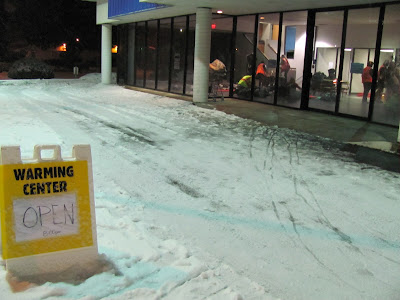Revised: January 2019
By Sarah Owens and Michael Livingston
The principle of maximum feasible participation in our publicly-funded institutions is forever under threat, and the Rural Oregon Continuum of Care is no exception.
Maximum feasible participation is a bedrock principle of the Economic Opportunity Act of 1964, which created "community action agencies" around the country to fight poverty by empowering the poor, and later, to offer assistance to the homeless under the McKinney-Vento Homeless Assistance Act.
The reason maximum feasible participation is under attack is because it works. Or it did, while it was allowed to do so.
Community Action, and its promise of maximum feasible participation of the poor, was about both recognizing the poor as able and perhaps better qualified to make judgments on their needs, as well as recognizing the participatory process itself as a powerful lesson in self-agency and self-respect. However, for many among the poor and among social activists, this recognition of individual capacity to make change translated into capacity to make demands of the state. This part did not jibe so well with many politicians, because to the poor, fighting poverty had to mean more than transformation of the individual into one that was fed, clothed, and educated—people wanted to transform the system. It meant ending discrimination, it meant more jobs and better pay, and it meant pushing local government to improve public services and infrastructure. It was perhaps a passionate desire that could not maintain federal support in a context where the urban poor also happened to be mostly black, and where therefore mobilization of the poor was colored by race and politics. This was how Community Action lost those initial explicit, legal foundations for a different kind of participatory promise, and was molded into a vehicle for service delivery.
For some comfortably well off (a designation that could include homeless housing and services providers with relatively stable funding), empowerment is groovy until people stop being helpless and needy and start wanting to participate in decision-making that affects their community. Even when participation means no more than attending meetings and observing (which, these days, is what "maximum feasible participation" has come to mean), some will perceive it as threatening. Thus, the right to attend meetings and observe has come under attack.
At the last meeting of the Rural Oregon Continuum of Care (aka, the Oregon Balance of State CoC), it was announced that the Board of Directors' "retreat" would be closed to non-board members -- meaning non-board members would not be allowed even to observe. Asked how the decision to close the meeting to non-board members, which appears to have been made not by the board, but by staff, squares with the principle of maximum feasible participation and Sections 1.3, 2.5, 2.7 and 7.2.1 of the ROCC bylaws (which establish a clear and strong policy of transparency, member participation and inclusiveness), staff told us, "the CoC is not a registered non-profit nor does it have any other 501(c)(3) designation. The CoC is entitled to conduct its meetings as necessary."
The ROCC Bylaws were substantially amended in June 2017. See here.
That, in legal circles, would be referred to as a non-responsive answer, because it doesn't address the question. It's also a non-sequitur, as it's irrelevant whether the CoC is "registered" or has a designation under the federal tax code -- it's still responsible to follow its bylaws. The answer is also a tautological, in that the decision can't be justified by claiming that the CoC is "entitled" (the claims are essentially the same).
In fact, the decision can't be justified, period.
There is no principled reason not to allow members -- and any other interested persons -- to attend a "retreat" with an agenda that looks like this (at left), and no one with any knowledge or experience in coalition building would dream of excluding from a meeting such as this members of the community who wanted to be included.
The ROCC board's apparent willingness to sacrifice basic principles, the abdication of its authority to staff, and staff's heavy-handed and arbitrary manner in handling this matter all reflect very badly on ROCC and will no doubt weigh in the decision whether or not Salem/Marion and Polk Counties should re-form a local CoC. Certainly, ROCC is giving the community little reason to want to stay.



















